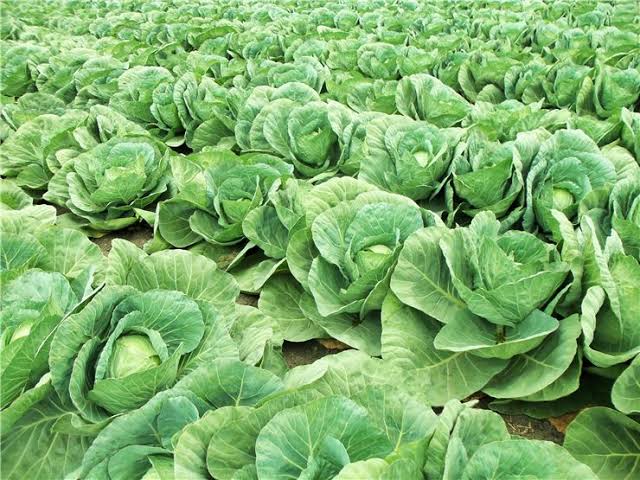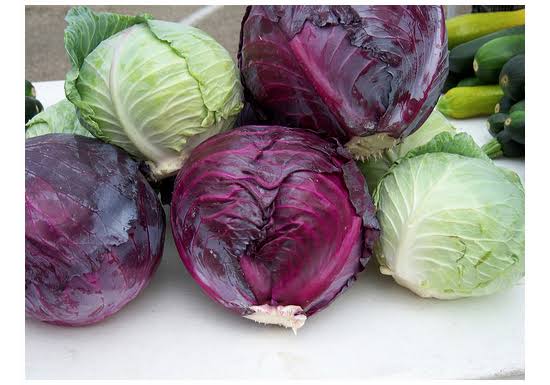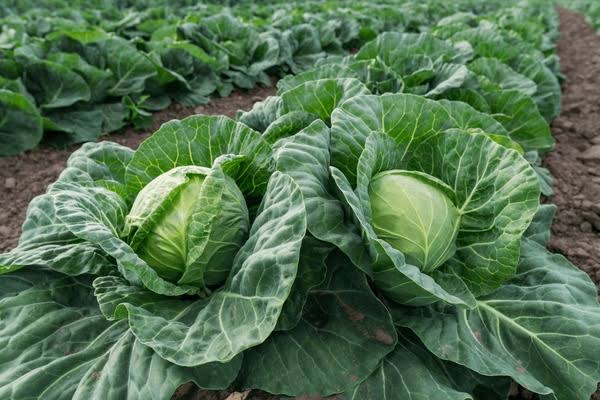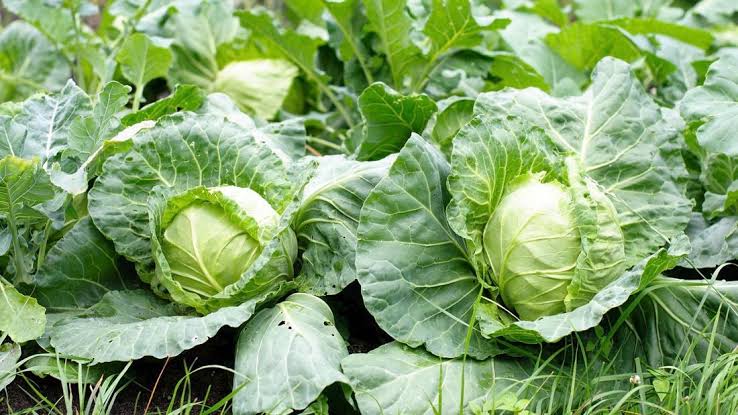The history and significance of cabbage is rich and varied, reflecting the agricultural practices and culinary traditions of different regions.
Cabbage, a member of the Brassica family, is a leafy vegetable known for its crisp texture and distinct flavor. This versatile vegetable has been a staple in many cultures around the world for centuries.
The origin of cabbage can be traced back to the Mediterranean region, where it was first cultivated by ancient civilizations. The earliest records of cultivation date back to the time of the Celts, around 600 B.C.
These early varieties were grown for their edible leaves, consumed both cooked and raw. The Romans also played a significant role in its development, recognizing its nutritional value and incorporating it into their diet.
They valued it for its medicinal properties, believing it could cure various ailments, including digestive issues. The history of cabbage reveals that it was not only popular among the Romans but also spread throughout Europe as they expanded their empire.
By the Middle Ages, it had become a common crop across the continent, particularly valued in colder regions for its ability to withstand harsh climates and provide essential nutrients during winter months. Its capacity to be stored for long periods made it an essential food source for many communities, contributing to its popularity in Europe.
As it spread across the continent, different varieties began to emerge, each adapted to specific climates and culinary preferences. Green cabbage, often referred to as common cabbage, was the most widely cultivated type.
However, other varieties, such as red cabbage and savoy cabbage, also gained recognition. Red cabbage, with its vibrant color, became a favorite for pickling and salads, while savoy, known for its crinkly leaves, was celebrated for its tenderness and flavor.
The history of cabbage took a significant turn during the 17th and 18th centuries when it became an important crop in North America. European settlers brought seeds with them, recognizing its value as a nutritious and hardy food.
It quickly adapted to the diverse climates of the continent, becoming a staple in many American diets. It was particularly favored for its versatility, being used in salads, soups, stews, and fermented dishes like sauerkraut.
As it spread around the world, further cultivation and selection occurred. In Asia, particularly in China and Korea, it became integral to local cuisines. Chinese cabbage, known as bok choy, and napa cabbage emerged as popular varieties, each with unique textures and flavors.
In Korea, it is a key ingredient in kimchi, a traditional fermented dish that has gained international acclaim for its health benefits and distinctive taste. This cross-cultural adoption exemplifies its importance as a global food source.
The history of cabbage also highlights its significance in traditional medicine. Various cultures have utilized it for its purported health benefits, including anti-inflammatory and antioxidant properties. J
uice made from it was even recommended by some herbalists as a remedy for stomach ulcers, showcasing its role in both nutrition and healing. Today, it is cultivated in numerous countries worldwide, with China being the largest producer. This food is celebrated not only for its culinary applications but also for its nutritional benefits.
It is low in calories yet high in vitamins C and K, as well as dietary fiber. This makes it a popular choice for health-conscious consumers seeking to incorporate more vegetables into their diets. In modern cuisine, it continues to play a prominent role, appearing in a wide range of dishes.
From classic coleslaw to hearty rolls and flavorful stir-fries, its versatility allows it to adapt to various cooking methods and flavor profiles. The increasing interest in plant-based diets has further boosted its popularity, as it serves as a key ingredient in many vegetarian and vegan recipes.
Moreover, it is a key player in the movement toward sustainable agriculture. As a hardy crop, it can be grown in diverse environments and requires relatively low inputs compared to other vegetables.
This makes it an attractive option for farmers looking to promote environmentally friendly practices. The ability to grow it in home gardens also empowers individuals to cultivate their own food, contributing to food security and self-sufficiency.
Cabbage history is not merely a tale of cultivation and consumption; it is a story that reflects the interplay between human culture and agricultural practices. From its ancient origins to its modern-day prominence, it has woven itself into the fabric of cuisines and traditions worldwide.
Read Also: Advantages and Disadvantages of Cross Breeding in Plants and Animals
Historical Significance of Cabbage in Agriculture

Its historical significance can be traced back to ancient times, reflecting the agricultural practices, dietary habits, and cultural values of different societies. Understanding this leafy vegetable’s journey from wild origins to a staple crop provides valuable insight into its importance in global agriculture.
The story begins in the Mediterranean region, where it was first cultivated by ancient civilizations. The earliest records suggest that the plant was domesticated by the Celts around 600 B.C. Initially, it was valued for its edible leaves, which were consumed both raw and cooked.
The ancient Egyptians recognized the nutritional benefits of cabbage and often included it in their diet, praising its health-promoting properties. Historical texts indicate that cabbage was served to laborers building the pyramids, highlighting its importance as a sustenance food in ancient Egypt.
As the Mediterranean cultures expanded, so did the cultivation of this leafy vegetable. The Romans were instrumental in spreading cabbage throughout Europe, recognizing its nutritional value and versatility.
They cultivated various varieties and used it not only for food but also for medicinal purposes. Roman scholars like Pliny the Elder documented the health benefits of cabbage, advocating its use as a remedy for ailments such as digestive issues and inflammation.
This early appreciation for its medicinal properties laid the groundwork for its continued significance in agriculture. During the Middle Ages, cabbage became a staple crop in Europe, particularly valued for its ability to withstand harsh climates and provide essential nutrients during the winter months.
Its hardiness made it an ideal choice for farmers, as it could be harvested late in the season and stored for extended periods. This characteristic contributed significantly to food security in Europe during times of scarcity, making it a crucial element of the medieval diet.
The cultivation of cabbage also played a role in social and economic structures during this period. It became a common crop among peasants and was often grown in community gardens.
This practice not only ensured food availability for local populations but also fostered a sense of community and cooperation among farmers. The sharing of seeds and cultivation techniques contributed to the development of regional varieties, enhancing the genetic diversity of cabbage and ensuring its adaptability to different climates and soil conditions.
In the 16th and 17th centuries, cabbage cultivation expanded to North America as European settlers brought seeds with them. This introduction marked a significant turning point in the agricultural history of the continent.
Cabbage quickly adapted to the diverse climates and soils of North America, becoming a popular crop among farmers. Its ability to thrive in various conditions made it a favorite for home gardens and commercial farms alike.
By the 19th century, it had firmly established itself as a staple vegetable in American cuisine. It became a key ingredient in dishes such as coleslaw, sauerkraut, and various soups, reflecting its versatility and appeal.
The popularity of fermented cabbage, particularly sauerkraut, highlighted its importance in preserving food and providing essential nutrients during the winter months. This culinary tradition showcased the ingenuity of early American settlers in utilizing locally available ingredients to sustain their families.
As industrial agriculture developed in the 20th century, cabbage cultivation underwent significant changes. Advances in agricultural techniques, including improved breeding practices and the use of chemical fertilizers and pesticides, increased cabbage yields.
This period saw the rise of commercial cabbage farming, with larger farms dedicated to the mass production of this crop. The globalization of food systems also contributed to the availability of cabbage in markets worldwide, making it accessible to a broader audience.
Despite the advancements in agricultural practices, the historical significance of cabbage remains relevant today. Its adaptability and resilience continue to make it a vital crop for sustainable agriculture.
Cabbage is often utilized in crop rotation systems, helping to improve soil health and reduce pest populations. Its ability to thrive in less-than-ideal conditions makes it a reliable choice for farmers looking to promote sustainable practices while ensuring food security.
The cultivation of cabbage has also evolved to meet changing consumer demands. The rise of organic farming has led to a renewed interest in traditional cultivation methods, emphasizing the importance of biodiversity and environmental stewardship.
Farmers are increasingly focusing on growing heirloom varieties of cabbage, which are often more resilient and flavorful than their commercially bred counterparts. This shift toward sustainable practices reflects a growing awareness of the need to preserve agricultural biodiversity while addressing the challenges posed by climate change.
In addition to its agricultural significance, it holds cultural importance in many societies. It is celebrated in various culinary traditions worldwide, from kimchi in Korea to stuffed cabbage rolls in Eastern Europe.
These dishes highlight the vegetable’s versatility and how it can be incorporated into diverse cuisines, reflecting regional flavors and cultural practices. The historical significance of cabbage in agriculture is a testament to its resilience and adaptability as a crop.
From its ancient origins in the Mediterranean to its role in modern sustainable farming practices, it has remained a vital source of nutrition and sustenance for countless generations. Its ability to thrive in various climates and its nutritional benefits ensure that it will continue to be an essential component of global agriculture.
Read Also: Genetic Modification Method of Animal Breeding
Botanical Description of Cabbage: Characteristics and Varieties

Physical Characteristics
Cabbage plants exhibit several distinctive physical traits that make them easily recognizable. The plant typically grows as a biennial, although it is commonly cultivated as an annual. Its growth habit is characterized by a compact rosette of leaves, which can vary in size depending on the variety.
The leaves are broad, thick, and often crinkled or smooth, with a prominent midrib. The coloration of the leaves can range from bright green to deep purple, depending on the variety. The stem of the cabbage plant is short and stout, and it serves as the base for the leafy head.
This head is formed as the inner leaves develop, pushing upward and enveloping the outer leaves. The size and shape of the head can vary significantly among different varieties. Some heads are round and compact, while others may be oblong or conical. The head’s weight can also differ, with some varieties reaching several pounds at maturity.
Cabbage plants typically grow to a height of 12 to 24 inches, with a spread of 18 to 24 inches. The root system is relatively shallow but extensive, allowing the plant to absorb nutrients and moisture from the soil effectively. Cabbage requires a well-drained, fertile soil to thrive, with a pH level between 6.0 and 7.5.
Varieties of Cabbage
This leafy vegetable is categorized into several varieties, each with unique characteristics, culinary uses, and growing requirements. The primary types of cabbage include green cabbage, red cabbage, Savoy cabbage, Napa cabbage, and Brussels sprouts.
1. Green Cabbage: This is the most commonly grown variety and is characterized by its smooth, bright green leaves. The heads are dense and round, making them ideal for salads, coleslaw, and cooking. Green cabbage is rich in vitamins C and K, as well as dietary fiber. It is often used in a variety of dishes, from stir-fries to soups.
2. Red Cabbage: Known for its vibrant purple-red leaves, this variety is a rich source of antioxidants and vitamins. Red cabbage has a slightly peppery flavor and is often used in salads, slaws, and pickled preparations. Its striking color adds visual appeal to dishes and is a popular choice for garnishing.
3. Savoy Cabbage: This variety features crinkled, dark green leaves and a loose head structure. Savoy cabbage is tender and has a slightly sweet flavor, making it suitable for salads and cooked dishes. Its unique texture allows it to hold sauces well, making it a favorite in various recipes.
4. Napa Cabbage: Also known as Chinese cabbage, Napa cabbage has a long, cylindrical shape with tender, pale green leaves. It has a mild flavor and is often used in Asian cuisine, particularly in stir-fries and kimchi. Napa cabbage is known for its crunchy texture and versatility in cooking.
5. Brussels Sprouts: While technically a separate cultivar of Brassica oleracea, Brussels sprouts are closely related to cabbage. These small, round heads grow along the stem of the plant and are harvested when they are about 1 to 2 inches in diameter. Brussels sprouts have a slightly nutty flavor and are often roasted or steamed.
Growth and Cultivation
Cabbage is a cool-season crop, thriving in temperatures between 60°F and 70°F (15°C to 21°C). It can be grown in both spring and fall, with the optimal planting time varying by region. It prefers full sun and well-drained, nutrient-rich soil. Farmers often use crop rotation and companion planting to promote healthy growth and deter pests.
Cabbage seeds can be sown directly in the garden or started indoors and later transplanted. When starting seeds indoors, they should be sown about 6 to 8 weeks before the last frost date.
Transplants should be spaced adequately in the garden, with a distance of 12 to 24 inches between plants, depending on the variety. This spacing allows for proper air circulation, reducing the risk of disease.
Nutritional Value
This leafy vegetable is not only versatile in cooking but also highly nutritious. It is low in calories and rich in vitamins, minerals, and dietary fiber. The vegetable is an excellent source of vitamin C, which supports the immune system and promotes healthy skin. Additionally, cabbage contains vitamin K, essential for blood clotting and bone health.
The fiber content in cabbage aids digestion and helps maintain a healthy weight. It is also known to contain various phytonutrients, including glucosinolates, which have been studied for their potential cancer-fighting properties. Regular consumption of cabbage may contribute to overall health and well-being.
Frequently Asked Questions on the History and Significance of Cabbage

1. What is the historical origin of cabbage?
Cabbage originated in Europe, specifically in the Mediterranean region, and has been cultivated since ancient times. Its domestication dates back to at least 1000 BC, with evidence of its use by ancient Greeks and Romans.
2. How did cabbage spread to different parts of the world?
Cabbage spread through trade and exploration. It was introduced to Northern Europe and later to the Americas by European settlers in the 16th and 17th centuries. Its adaptability to various climates contributed to its widespread cultivation.
3. What are the cultural significances of cabbage?
Cabbage has held cultural significance in various societies, often symbolizing prosperity and health. In some cultures, it is used in traditional dishes during celebrations, such as sauerkraut in Germany or colcannon in Ireland.
4. How did cabbage impact agriculture in historical times?
Cabbage became a staple crop in many regions, contributing to food security. Its ability to grow in diverse climates and soil types made it an important agricultural product, helping to sustain populations during times of scarcity.
5. What are the nutritional benefits that have historically made cabbage significant?
Historically, cabbage has been recognized for its nutritional value, providing essential vitamins and minerals. Its high vitamin C content made it crucial for preventing scurvy among sailors during long voyages, further enhancing its significance.
6. How is cabbage perceived in modern agriculture?
In modern agriculture, it remains significant due to its economic value and nutritional benefits. It is widely cultivated, with various cultivars suited for different climates and culinary uses, playing a vital role in both commercial farming and home gardens.
Read Also: Importance of Personal Hygiene and How to Improve on it
Do you have any questions, suggestions, or contributions? If so, please feel free to use the comment box below to share your thoughts. We also encourage you to kindly share this information with others who might benefit from it. Since we can’t reach everyone at once, we truly appreciate your help in spreading the word. Thank you so much for your support and for sharing!

